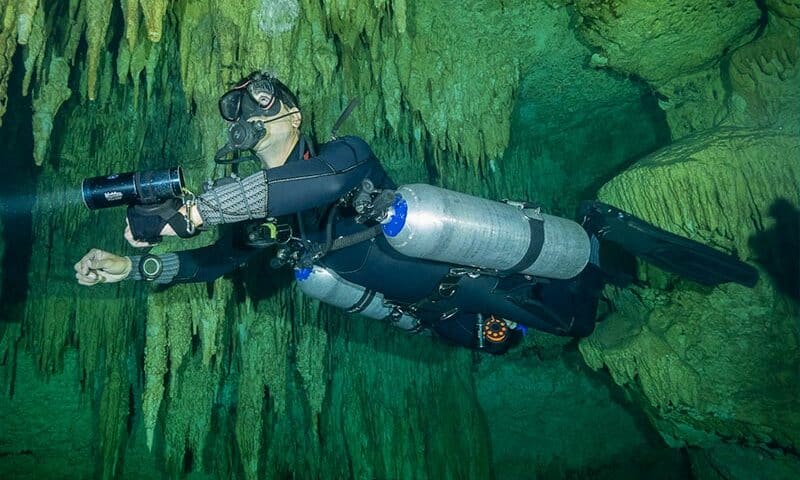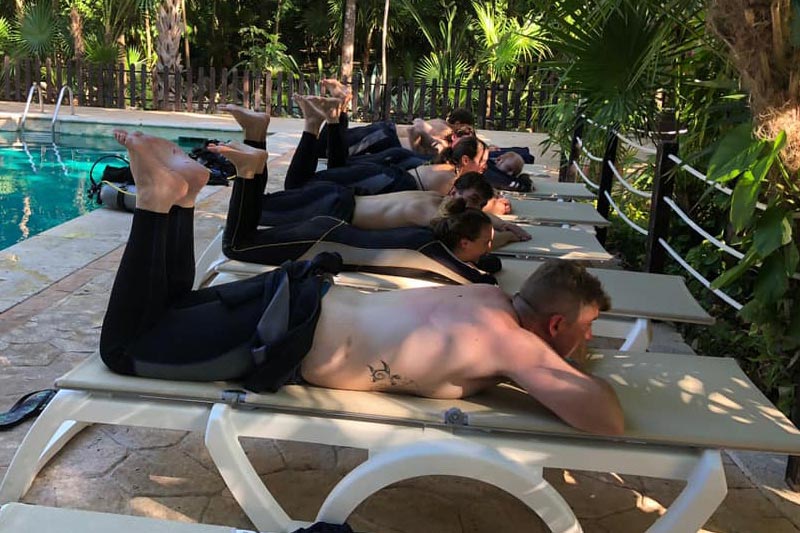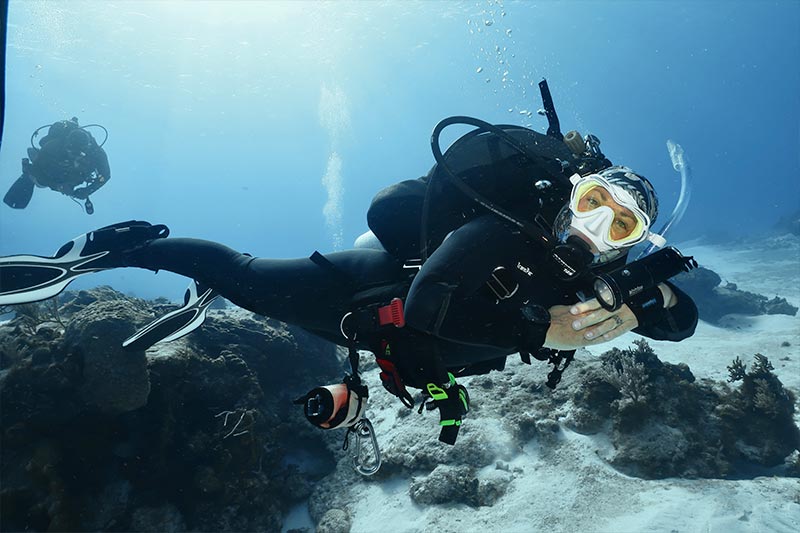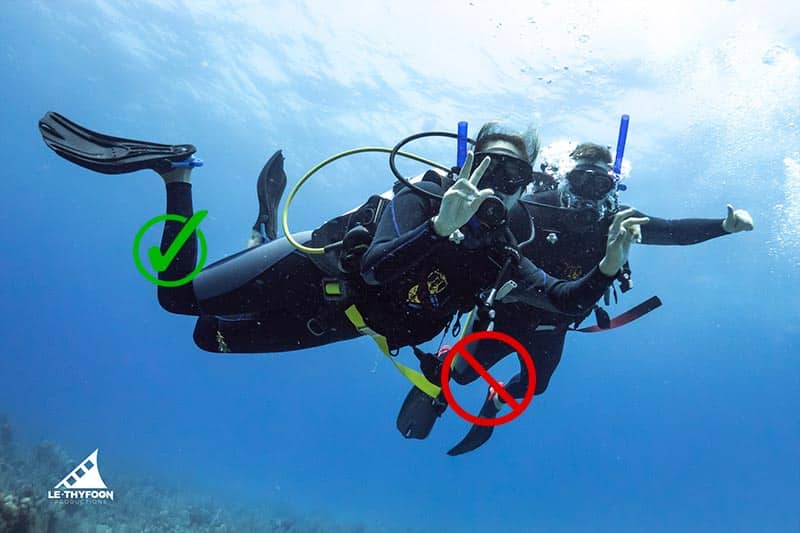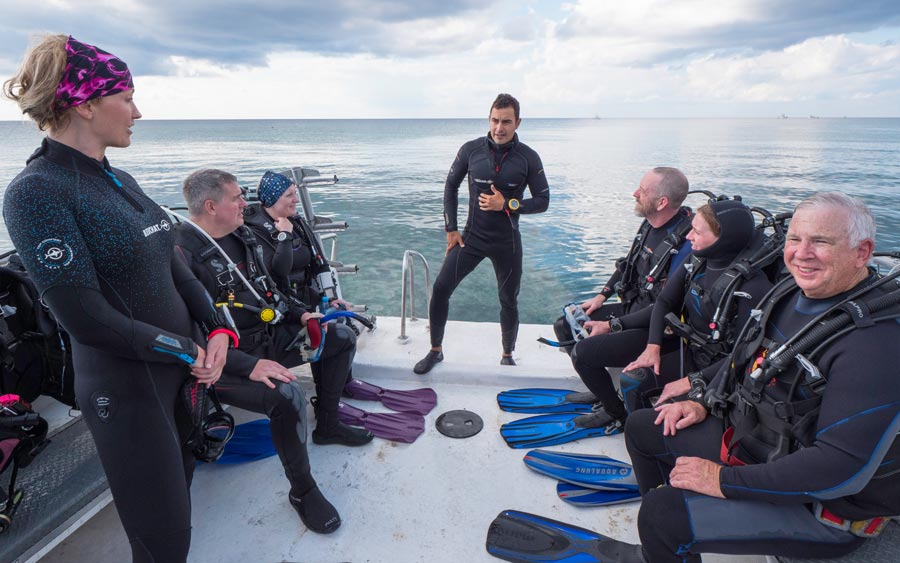3. Different Scuba Diving Trims
Trim, as the expression of the body angle in relation to the movement direction, is crucial. Being completely horizontal while swimming or floating parallel to the surface or the seabed indicates a neutral balance. Leaning upward indicates a positive balance while leaning downward represents a negative balance.
During descent and ascent, you should regulate the amount of air in your equipment and adjust your posture according to the underwater environment. However, 90% of the time a recreational diver spends in the water should have a neutral trim, implying maintaining a horizontal position.
4. Tips to Maintain Horizontal Scuba Trim
Posture and body position are fundamental for perfect scuba diving trim.
Head Up / Look Forward / Extended Arms: Keep your head backward, eyes forward, and arms extended in a V shape. This allows visibility of your diving equipment and maintains awareness of your depth and time underwater.
Shoulders Back / Arched Back: Opening the chest, pushing the shoulders back, and arching the back helps maintain an aerodynamic posture.
Tight Glutes, Knees in Line with Torso, Bent at 90 Degrees: Tense glutes will help keep the hips in line with the torso and prevent the waist from sinking. Keeping the knees in line with the torso and bent reduces water resistance, improving movement efficiency.
Flex the Ankles and Keep Fins Horizontal: This contributes to stabilizing the lower body, reducing the need for kicking and enhancing overall control.
Equipment
To achieve a perfect posture, it’s essential to understand how each part affects your position. The more familiar you are with your equipment, the more comfortable you’ll feel while diving.
The location of the buoyancy control device (BCD) and tank, including the tank material itself and the weight system, influence posture. Experiment with different types of BCDs with the help of a professional until you find one that fits your suit well and feels comfortable. Distribute weight properly. Experimenting with different tank positions and adjusting the amount of weight can be crucial to finding your ideal balance in the water. Not everyone needs the same amount of weight placed in the same spot. Many divers use very heavy fins. This simple fact can influence the weight configuration, demanding compensation.
The adjustment and adaptation process can take time. It’s advisable to do frequent and close-together dives to familiarize yourself with each adjustment you make to your equipment and how it affects your posture. With time and practice, you’ll reach a level of comfort and control that allows you to handle your equipment more intuitively and effectively as you explore the underwater world.




